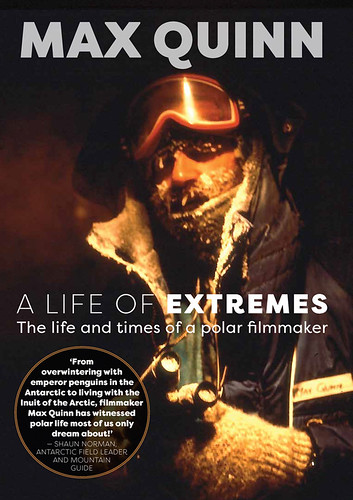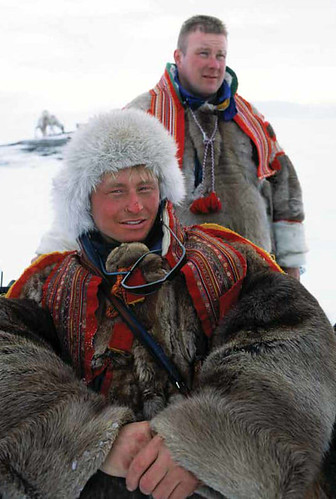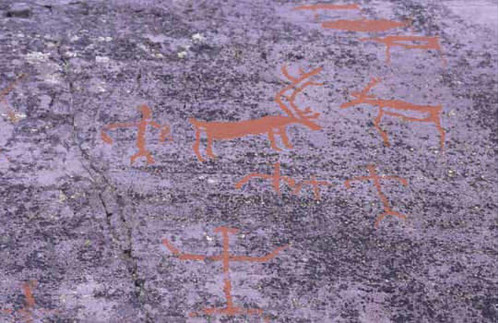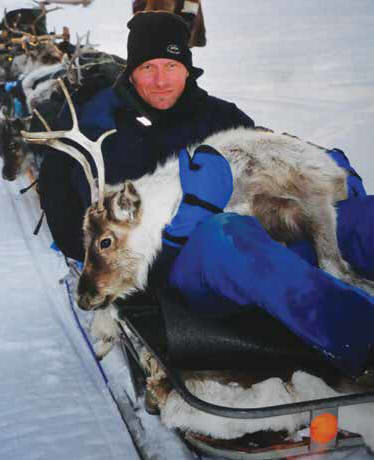A Life of Extremes - The Life and Times of a Polar Filmmaker: In Search of the Sami
Max Quinn is one of the world's most experienced polar filmmakers. His career, which spans 50 years, has taken him to the ends of the earth, from his native New Zealand to Alaska, and Antarctica to the Arctic.
His new book, A Life of Extremes is a personal account of his work, featuring vibrant text and stunning images that illustrate 20 years of adventures in polar climates.
He has filmed in some of the most extreme environments on Earth, creating documentaries for the likes of National Geographic, Discovery Channel, and The Smithsonian Channel. Max went on to film, direct, and produce many natural history documentaries, including Ice Pilots (2005), Expedition Antarctica (2010), Hunting the Ice Whale (2013), and South America's Weirdest (2019). In recent years, Max has been working extensively in Mexico, the USA, Taiwan, and China (including Tibet), for a series of nature documentaries for National Geographic Wild. Now 'retired,' he continues to do freelance projects around the globe.

This extraordinary book is a glimpse into a life and career that few people could imagine, let alone experience. Chapters include A Journey into the Unknown, A Summer on Ice, The Night of the Penguin, My Own Worst Journey, The Winter of My Discontent, Poles Apart, Drilling for Weather, The Spirit of the North, and more.
Quinn notes,
When I think back over my time it seems almost like a dream that I have experienced so much. Yet the stories contained in this book represent only a small slice of my life roaming the world filming and producing natural history films. If in only a small way I have been able to reflect this remarkable world through my work, I will forever remain satisfied.
In his book, learn, from behind the camera, about the natural history and wildlife of our world. Leave the tourist trail behind with this unique insight into life in the immensely beautiful, most extreme places on earth.
If you're looking for a captivating read, look no further. Highly, highly recommended!
This excerpt from A Life of Extremes, a chapter entitled In Search of the Sami, puts you right in the action with the Sami people and their reindeer. Take a look:
Traditionally, the Sámi grazed their herds inland during the winters. Here the precipitation was low and while snow blankets the ground it was easy for the reindeer to access the mosses and lichens using their hooves to scrape away the snow. At the coast the rainfall was much higher, meaning the snow was thicker during the winter. This is the reason they herd them inland and then back to the coast in early spring for the incredible spring growth, helped along by the warm Gulf Stream that caresses the Norwegian fiords.
This year, however, there had been a catastrophic thaw in the middle of winter, which refroze, creating a layer of impenetrable ice. It meant the reindeer couldn’t break through to their traditional food source. Many were now starving and not capable of the long trek to the coast. This was why Jonna and his team were having to feed out their precious supply of hay.

Jonna Utsi — impressively striking. Photo: Mervyn Aitchison
We immediately sensed some tension in the air. We weren’t quite sure if Jonna was too pleased to see us. Perhaps it was his limited English, so we explained we wouldn’t intervene but just follow along, getting all the shots we needed.
It turned out to be an unforgettable day. Merv and I were able to skirt ahead and capture all the drama of a Sámi reindeer herd on the move, giving me the chance to set up shots that pulled focus from branches to reindeer. Some reindeer were even resorting to shredding the bark off small trees, such was their hunger, while others, obviously weak and exhausted, struggled to keep up through the deep soft snow.
In the past, herders would have used sleighs towed by reindeer and a series of signals to others in the team. Today, the Sámi use motorized toboggans and radio communications, just like any modern farmers herding their stock. They were a magnificent sight.
At the end of the day they set up a wigwam-shaped tent, lit a fire and hoed into a hot meal of reindeer stew. We moved in close with our camera, not knowing if we’d be asked to clear off. Instead we were welcomed. I think they appreciated our patience and we happily filmed a lovely intimate sequence with Jonna and his team chatting away in their Sámi language as they recounted the demands of the day. As we left them, we arranged to intercept them again towards the end of the drive when they were nearing the fiords.
Once back in Kautokeino, our journey in search of the Sámi took us north, to the village of Alta — about as far north as you can go in this long skinny country. Here was the evidence recently discovered of people living and hunting here as far back as 7000 years. At the local Alta museum, the director took us down a trail to some rocky snow-covered outcrops.
As he scraped away the snow, there on the rocks appeared simple carved figures depicting life here thousands of years ago. They showed a sophisticated hunting and gathering people who were at one with their environment. These Alta rock carvings depicted hunters wearing skis and hunting moose — incidentally an animal not found this far north today — and people in boats. Whether these ancient people were related to today’s Sámi, it still wasn’t known, but it would make a fascinating insert into our Polar People episode.

Reindeer, moose and the hunting strategies of these ancient Arctic peopleperfectly preserved in the rock carvings of Alta. Photo: Mervyn Aitchison
Our drive back to intercept Jonna was through a series of magnificent fiords with thick snow down to the water line. We spent a bitter night in a rustic hut in the high mountains.
Next day there was still no sign of Jonna turning up. A local, setting off to track down Jonna and his herd, offered me a seat on his snowmobile. We shot away at blistering speed, flying from snowdrift to snowdrift, with me trying to keep my camera safe on my lap, not to mention staying on my seat. I had to leave my tripod behind, as there was no room, so this would all be shot hand-held if we ever found Jonna before the day was over.
After an hour being bounced around, we spotted Jonna surrounded by his reindeer. I immediately sensed all was not well. From a distance I could see Jonna and his team, manhandling reindeer onto sleds, before moving onto other animals lying prone in the snow. I started to film the intense action. I wasn’t sure if Jonna was too pleased to see me filming as he and his helpers struggled to lift these sizeable animals onto the sleds. The reindeer were obviously exhausted, offering no resistance to being manhandled. I stuck to my task of recording this harsh aspect of life in the remote Norwegian Arctic.

Jonna and his leading hand relax at the end of their journey, with researcher Karsten Schneider left and Max right. In the background reindeer eke out a meal
on the lichen-covered rocks. Photo: Mervyn Aitchison
When I felt the time was right, I put a question to Jonna as he struggled with his starving herd, even though I felt slightly reticent about doing so. I had worked with a lot of hard-nosed journalists during my time as a news cameraman, but this didn’t come naturally for me. Surprisingly, Jonna was straight with me in his reply, “This is the thing I hate most. I don’t want to do this, but I don’t know what we can do. It’s nature that rules this.”
Jonna then leapt onto his snowmobile that was towing as least a dozen weak reindeer, ‘Jump on,’ he called out, I felt flattered. Off we sped, me hanging on with one hand while attempting to film bumpy shots with the other. It should look very dramatic and immediate, I thought.
As Jonna was nearing the end of the migratory journey, winter had played him one final cruel hand. Instead of being greeted with lush spring growth, a fresh dump of snow had covered the reindeer’s precious food source, leaving the herd struggling to survive and having to eat meagre lichens on a few exposed rock outcrops by loosening them with their hooves before nibbling what they could.
That night at his camp, Jonna again graciously consented to my questions. I wanted to know what drove him. ‘I think this is my life. I don’t think about any other things. It’s so natural that I forget this is a traditional way of life that we shouldn’t let go.’ I sensed the emotion of the moment was getting to him. After all, he had endured a 160-kilometre drive with his struggling herd in the most extreme conditions imaginable. With tears welling up in his eyes, he looked at me and said, ‘When I’m alone up in the mountains I think, what if my father was with me? He was taking me to the mountains all the time. I’m glad he did because now I really like to be here.’
As I left Jonna and his group behind, I felt a real sense of honour that in the short time we had been in his company, I had witnessed a lifestyle that few would have seen.

Researcher Karsten Schnider cradles an exhausted reindeer. Photo: Mervyn Aitchison
Find A Life of Extremes, published by Exisle Publishing, on Amazon: https://amzn.to/35XUKG6
All content contained herein courtesy and copyright Max Quinn/Exisle Publishing, reprinted with permission
-

- Log in to post comments



















